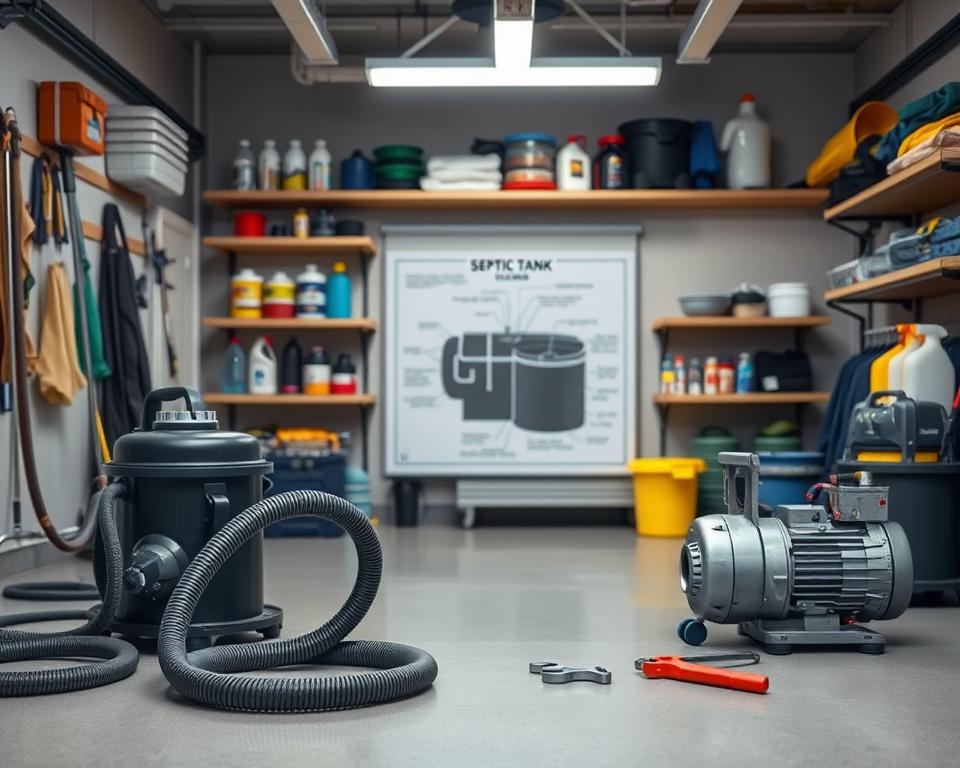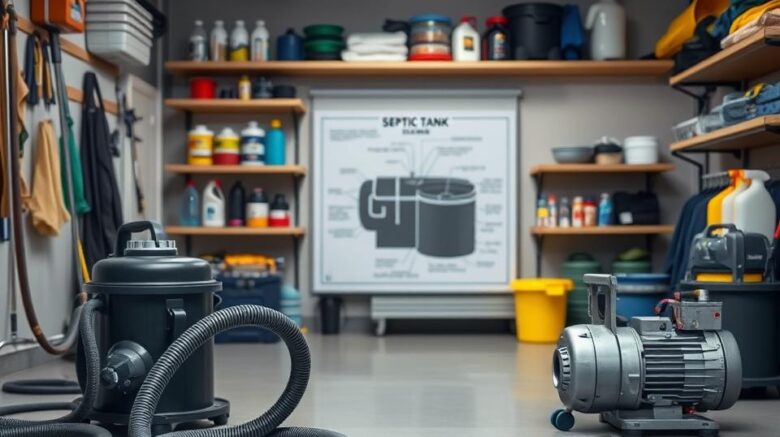Preserve Septic System Cleaning for Tank Health
Do you ever pondered regarding the consequences of neglecting septic system maintenance? For homeowners relying on these installations for sewage handling, missing regular care can result in significant costs. It also creates risks to both health and the surroundings. Cleaning your septic system isn’t just a basic task; it’s vital for making sure your home operates smoothly. By consistently emptying your septic tank, you prevent solid waste accumulation and extend the service life of your system. This proactive stance helps you sidestep any unwanted events. Find out the significance of septic tank maintenance and the steps required with septic pumping cost.
Summary Points
- Routine septic system cleaning is essential for preventing costly fixes.
- Ignoring upkeep can result in health hazards for your family.
- Comprehending your septic system helps in effective stewardship.
- Signs of a failing septic system should be identified early.
- Professional services can help in preserving optimal tank health.
Grasping Your Septic System
A septic system is an effective in‑situ approach for processing wastewater. It mainly comprises two components: the septic tank and the leachfield. Both are vital for ensuring safe treatment and protecting the ecosystem.
The septic tank gathers wastewater from your home. Inside,, solids drop to the bottom, and effluent float to the top. Bacteria within the tank break down the organic material, making the outflow simpler to treat. This pre‑treated wastewater then moves to the absorption area for additional filtering by the soil, completing the cycle.
It’s important for homeowners to understand the dynamics of their septic system. Learning how the septic tank and drainfield operate together can lead to enhanced system care. This knowledge supports effective maintenance practices, supporting the system’s longevity.

Significance of Regular Septic System Cleaning
Routine maintenance of the septic system is crucial for domestic and ecological health. If overlooked, raw wastewater can seep into your yard. This escape may result in groundwater contamination, creating dangerous conditions. By servicing the septic system clean, you safeguard your household and the ecosystem.
It’s advised to service the septic system every three to five years, based on how much you load it. Such care is not just environmentally wise; it heads off big bills. A septic system that’s properly cared for operates more reliably, ensuring a cleaner living space and a cleaner ecosystem.
Indicators Your Septic Tank Needs Cleaning
Homeowners need to identify signals that their septic tank may need pumping. Common symptoms to monitor include:
- Delayed draining in washbasins, bathtubs, and loos
- Bad smells near the leachfield
- Effluent returns in interior drains
- Persistent damp zones or extra‑green patches of grass on top of the septic system
It’s essential to spot these symptoms early to prevent serious septic tank problems. Regular inspections are key. They detect issues before they become costly restorations. Checking your system regularly ensures it operates well and endures longer.
Keeping watch and moving promptly are essential for septic system maintenance. By monitoring these red flags, you can preserve your septic system in top shape.
Septic System Cleaning Intervals
Pumping your septic system on schedule is key to keeping your home’s plumbing in excellent condition. Professionals usually suggest servicing the septic tank every three‑to‑five years. However, this can vary according to the capacity of your home, how much usage you have, and the size of your tank.
If you have a high‑occupancy household that draws more water, you might need to clean the system more frequently. Tracking your water consumption can help you figure out if you need to modify your pumping schedule.
All in Sanitation encourages setting up a consistent pumping schedule that matches your household’s unique needs. Sticking to a routine maintenance routine helps keep your septic system running efficiently and sidesteps expensive restorations.
Septic System Cleaning: Recommended Methods
For a septic system to keep robust, homeowners must follow important guidelines. It’s vital not to send down items that won’t break down; doing so prevents clogs and maintains the system working well. Similarly, minimizing chemical cleaners keeps the essential bacterial balance. These actions are vital for the system’s life span and efficiency.
Being proactive with scheduled inspections is crucial. Setting up periodic assessments can catch issues promptly, facilitating prompt solutions. Additionally, reducing water through repairing drips and conscious usage boosts septic tank health. These measures guarantee the system runs smoothly for years.
It’s also wise not to drive on the absorption area. Leaving this area unobstructed ensures it effectively process waste water, safeguarding your system from damage. Listening to advice from specialists like All in Sanitation also enhances septic system care.
The Steps of Septic Tank Pumping
For homeowners, grasping the septic system service process is key. A licensed septic pumper should perform scheduled septic tank pumping to maintain your system functioning efficiently. The first step is assessing the tank’s state to decide when it is due for pumping.
A septic tank demands pumping once the solids fill about a third to half of its volume. The licensed septic pumper will then clear out these accumulations. This action preserves the system’s performance. Furthermore, the visit may include examining the tank for potential issues, enabling quick fixes.
Maintaining a record of each pumping service is wise. This log lets owners monitor their septic system’s maintenance, and is helpful if listing the property. Regular septic system maintenance improves its life span and performance, averting hefty fixes down the line.
Septic Tank Check‑Up: What to Examine
Routine inspections are crucial for your septic system’s health. Using a thorough septic tank inspection checklist can uncover latent issues before they worsen. Inspections should be done by a licensed contractor every one to two years. They will assess sludge levels and the floating layer during this time.
Examining the inlet and outlet baffles and filters is also vital. These parts are key for your septic system’s smooth operation. Detecting leaks or issues promptly can avoid large repair costs. Preventive actions, like adhering to an inspection checklist, enhance your system’s longevity and effectiveness.
Specialized Septic System Services
Utilizing professional septic system services is essential for your septic system’s integrity. By selecting a company like All in Sanitation, you guarantee that qualified professionals handle the pumping, inspections, and repairs thoroughly. Licensed septic professionals have expertise, allowing homeowners to maintain the system’s optimal functionality long‑term.
Servicing by certified technicians lowers the likelihood of surprise breakdowns and expensive restorations. These services incorporate in‑depth inspections that assess the system’s status, locating incipient troubles early. Adopting this proactive stance significantly prolongs your septic system’s life.
In the end, entrusting your septic system to qualified experts offers confidence. Collaborating with companies such as All in Sanitation leverages their know‑how. It guarantees the integrity of your tank, building trust in its maintenance.
Septic System Maintenance Hints for Homeowners
Homeowners have the capacity to ensure their septic systems operating reliably. Following efficient care tips significantly improves their performance. Implementing easy changes to how we use water, like limiting unnecessary use and distributing the use of appliances, reduces pressure on the system.
Installing efficient fixtures in your washrooms and galleys significantly supports septic health. These fixtures decrease water use without compromising convenience. Not using garbage disposals is smart too, as they produce more waste in the system, necessitating increased upkeep.
Routine inspections and adhering to a proper maintenance schedule will extend your septic system’s service. Being mindful of everything that goes down your drains is crucial for preserving a healthy septic environment. By practicing these measures, you’ll greatly benefit your septic system’s operation and durability.
Common Septic System Fixes
Septic systems may experience various troubles over time, requiring repairs. Frequent concerns involve leaks, damaged baffles, and drainage issues in the drainfield. By identifying the symptoms at an early stage, homeowners can address them quickly, maintaining their system is in sound condition.
Usual repairs consist of:
- Replacing damaged parts to restore system integrity
- Mending or substituting broken lines to avoid leaks
- Removing obstructions from clogged lines to guarantee proper drainage
Addressing septic problems quickly not only lowers expenses over time but also lengthens the system’s life. Scheduled check‑ups and maintenance can avoid these complications, aiding in the upkeep of a healthy septic system.
The Final Word
Keeping your septic system healthy is central to ecological and family well‑being. Regular pumpings and check‑ups avoid hefty bills and health risks. Taking initiative with septic care protects time and reduces worry.
Engaging experts like All in Sanitation guarantees first‑class upkeep tailored for your system. Their experience assists detect issues quickly, avoiding major troubles and underscoring the need for regular inspections.
Adopting effective habits for septic maintenance promises long‑term system efficiency. A small amount of maintenance in the present secures a better‑functioning septic system in the future.
